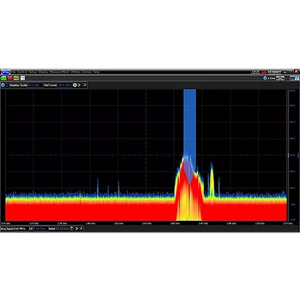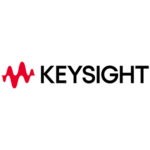
- Description
- Specifications
- Documents
Keysight MXR2RTSA/160 RTSA and DDC for Infiniium MXR-Series
Features and Specifications
- (MXR2RTSA/160) 160 MHz of of analysis on 4 or 8 different center frequencies
- Supports applications from ZigBee to 5G FR1
- Real-Time Spectrum Analysis
- Confidently capture fleeting or transient signals
- Frequency mask trigger
- Measurements via cursors
- Center frequency up to oscilloscope bandwidth or
6 GHz center frequency with Frequency Extension (MXR2FRE) upgrade
- Digital Down-Conversion
- 2 GHz span, all channels
- Frequency mask trigger (FMT)
- Cursor measurements
- Demodulate, analyze and perform advanced signal analysis on I/Q signals and with VSA and MATLAB software
- Standard Performance
- Frequency Range: 0 Hz to Oscilloscope Bandwidth
- Analysis Bandwidth: 40 MHz
- Center Frequency Control: All channels are locked together
- With RTSA/DDC Option
- Frequency Range: 0 Hz to Oscilloscope Bandwidth
- Analysis Bandwidth: RTSA: 160/320 MHz; DDC: 2 GHz
- Center Frequency Control: Independent per channel
- RTSA/DDC Option and if added Frequency Extension (MXR2FRE)
- Frequency Range: 0 Hz to 6 GHz
- Analysis Bandwidth: RTSA: 160/320 MHz; DDC: 2 GHz
- Center Frequency Control: Independent per channel
Explore the Frequency Domain in more depth with Real-Time Spectrum Analysis (RTSA). Every model in the MXR-Series is equipped with a standard 40 MHz analysis bandwidth for DDC and RTSA on a single center frequency. There are also options to expand this to 160 (MXR2RTSA/160) or 320 MHz (MXR2RTSA/320) of analysis on 4 or 8 distinct center frequencies. RTSA is particularly effective for examining rapidly fluctuating signals. For instance, capturing volatile Bluetooth data can be challenging with the conventional FFT, but it becomes straightforward with RTSA. With its capability to generate 200,000 FFT plots per second, RTSA can easily capture even sporadic Bluetooth data, which might be nearly undetectable with the typical FFT that produces around 1,000 plots per second.
